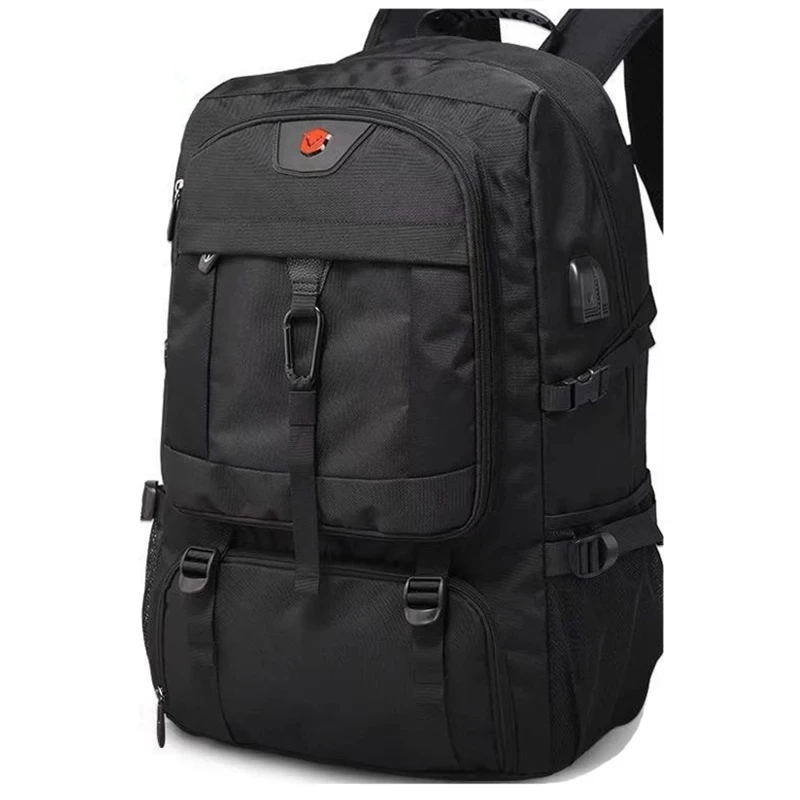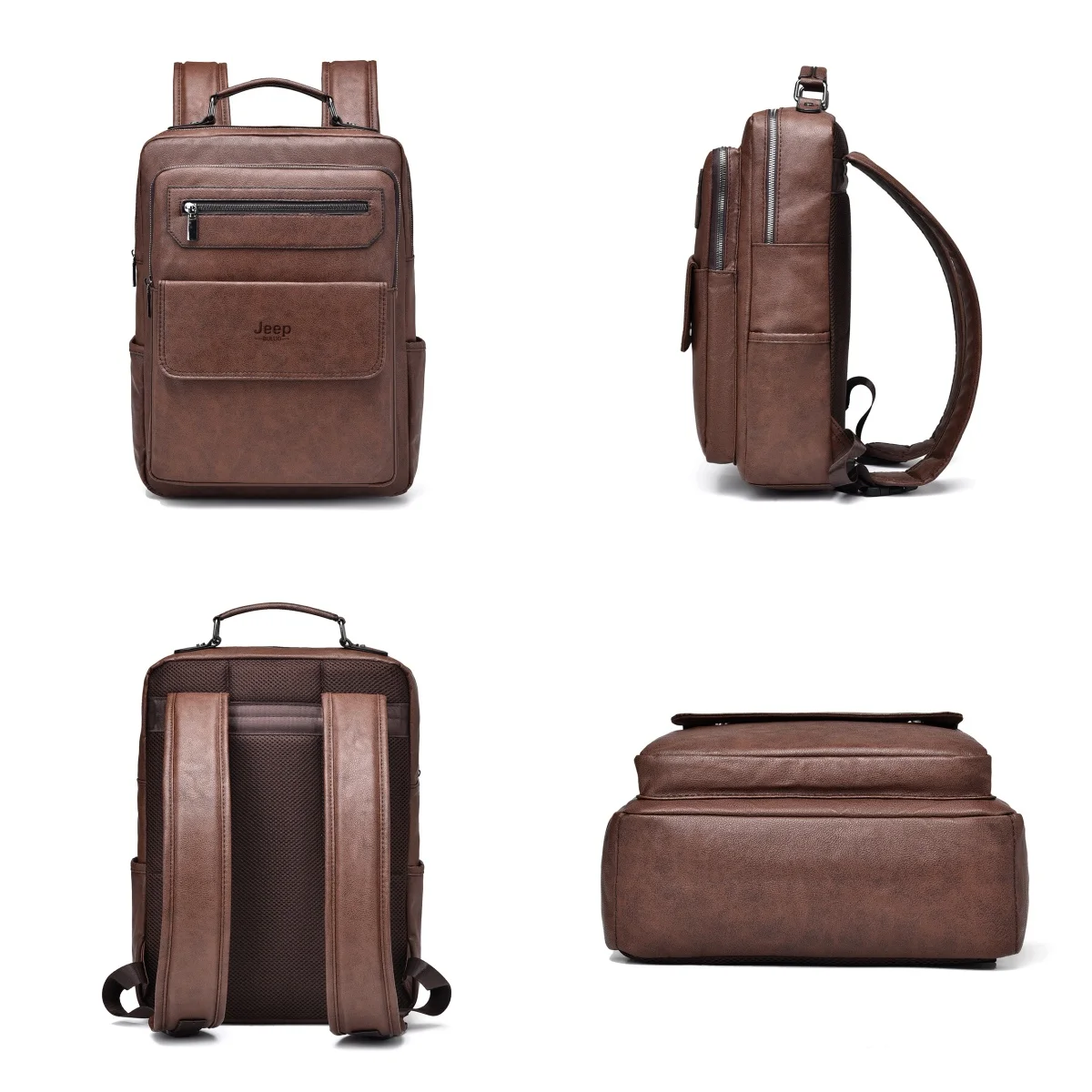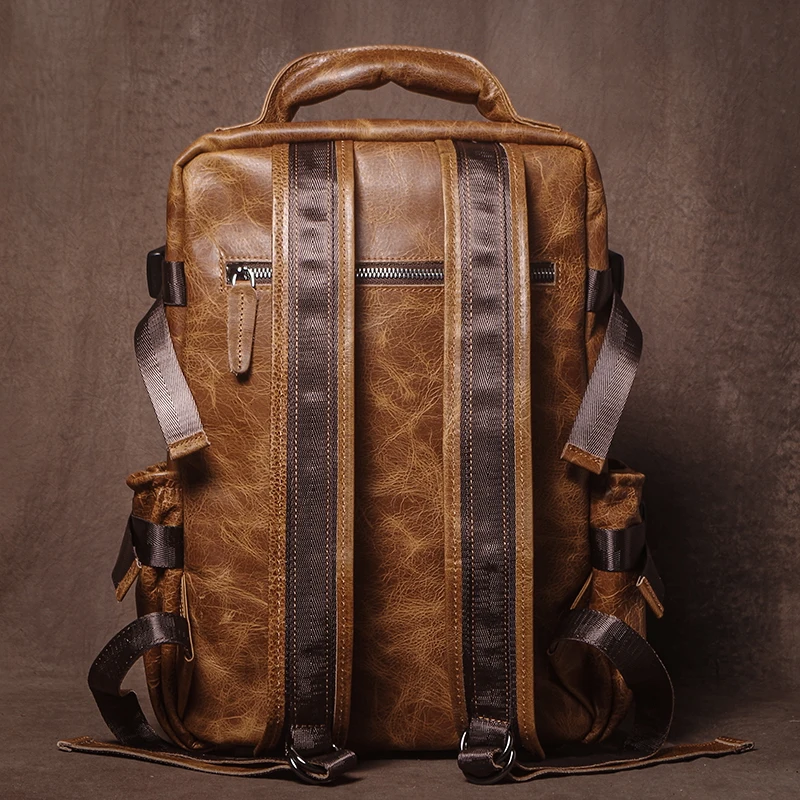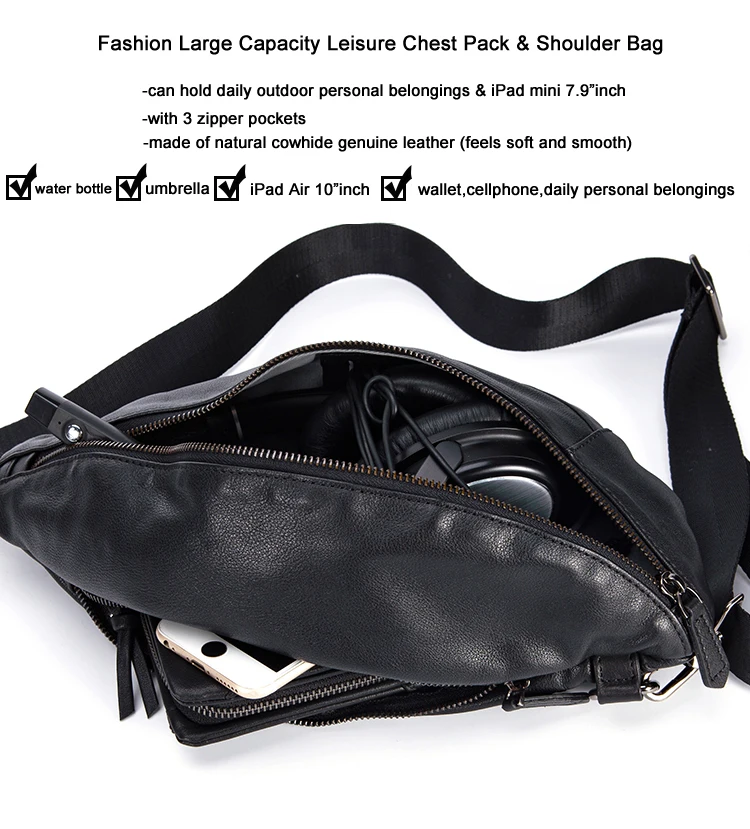Choosing the right backpack size can feel overwhelming with so many options available. Whether you’re planning a quick day hike, a weekend getaway, or an extended adventure, finding the perfect balance between too much and too little space is essential. This comprehensive guide will help you understand backpack sizing and select the ideal capacity for your specific needs.
Understanding Backpack Volume Measurements
Backpack volume is typically measured in liters (L) or cubic inches (cu in), representing how much space is available inside the pack. This measurement tells you how much gear you can fit inside. The standard conversion between these measurements is simple: 1 liter equals approximately 61 cubic inches.
When comparing backpacks from different manufacturers, you might notice slight variations in how they measure volume. Some brands measure only the main compartment, while others include all pockets and compartments in their total volume specification. This inconsistency can make direct comparisons challenging.
For example, a 40-liter pack from one brand might actually hold more or less than a 40-liter pack from another brand depending on their measurement method. Proper leather conditioning and waterproofing will help maintain your backpack’s shape and capacity over time, regardless of the initial measurements.
Here’s a quick reference for common volume conversions:
| Liters | Cubic Inches |
|---|---|
| 20 L | 1,220 cu in |
| 40 L | 2,440 cu in |
| 60 L | 3,660 cu in |
When comparing backpacks, look for detailed specifications and consider how the manufacturer measures volume to ensure you’re making accurate comparisons.
Backpack Size Chart: Quick Reference Guide
Determining the right backpack size depends primarily on your intended use. This chart provides general guidelines to help match capacity with different activities and trip durations. Remember that these are recommendations, not strict rules – choosing the perfect backpack volume involves considering your personal needs and preferences.
| Size Range | Trip Duration | Best For | Typically Fits |
|---|---|---|---|
| 10-20L (610-1,220 cu in) | Day use | Day hikes, commuting, school | Water, snacks, extra layer, small electronics |
| 20-30L (1,220-1,830 cu in) | Day use | Longer day hikes, daily commute with gym gear | Above plus lunch, extra clothing, small gear items |
| 30-50L (1,830-3,050 cu in) | Overnight to weekend | Weekend trips, minimalist overnighters | Sleep system, change of clothes, cooking gear, food |
| 50-70L (3,050-4,270 cu in) | Multi-day | 3-5 day trips, non-minimalist weekends | More clothing options, larger sleeping gear, extra supplies |
| 70L+ (4,270+ cu in) | Extended | Week+ expeditions, winter trips, family gear | Cold weather gear, extended supplies, specialized equipment |
This chart provides a starting point, but your ideal size may vary based on the factors we’ll explore next.
Key Factors Influencing Your Ideal Backpack Size
Finding your perfect backpack size isn’t just about trip length. Several personal factors will influence which capacity works best for you. The following sections break down the most important considerations to help you make an informed decision. Proper conditioning for your leather backpack is essential regardless of size to maintain its appearance and functionality.
Trip Duration and Recommended Capacity

The length of your trip is perhaps the most significant factor in determining backpack size. Here’s a more detailed breakdown:
Day Trips (10-30 liters/610-1,830 cubic inches)
* Perfect for short adventures lasting a few hours to a full day
* Accommodates essentials like water, snacks, first aid kit, camera, and extra clothing layers
* Compact enough for maneuverability on trails or city streets
* Often features minimal internal organization, focusing on simplicity
Weekend Trips (30-50 liters/1,830-3,050 cubic inches)
* Ideal for 1-2 night adventures
* Room for a lightweight sleep system, change of clothes, cooking equipment, and food
* Balances capacity and weight for short multi-day journeys
* Usually includes more organizational features and potentially specialized compartments
Multi-day Trips (50-70 liters/3,050-4,270 cubic inches)
* Suited for 3-5 day adventures
* Accommodates more clothing options, a more substantial sleep system, and extended food supplies
* Provides flexibility for varying weather conditions
* Typically includes robust suspension systems to manage heavier loads
Extended Expeditions (70+ liters/4,270+ cubic inches)
* Designed for week-long trips or longer
* Space for comprehensive gear collections, extended food supplies, and specialized equipment
* Necessary for winter camping when bulkier insulated gear is required
* Often includes modular components and expanded organization systems
Our leather travel backpacks come in various sizes to accommodate different trip durations, combining functionality with timeless style.
Activity-Specific Size Requirements
Different activities have unique gear requirements that directly impact the backpack size you’ll need:
Hiking and Backpacking
* Focus on weight-to-capacity ratio and comfortable load distribution
* Multiple access points help reach gear without unpacking everything
* External attachment points for specialized equipment (trekking poles, sleeping pad)
* Waterproof compartments or covers for weather protection
Travel and Urban Exploration
* Often limited by airline carry-on restrictions (typically 40-45L maximum)
* Security features like hidden pockets and lockable zippers
* Laptop sleeves and electronics organization
* Streamlined external profile for navigating crowded spaces
Daily Commuting
* Compact design (15-25L) for what size backpack is best for commuting
* Padded laptop compartment and organization for small items
* Professional appearance for workplace settings
* Quick-access pockets for transit cards, phone, and keys
Specialized Activities
* Photography: Padded compartments and customizable dividers
* Climbing: Streamlined profile with gear loops and rope straps
* Ski touring: Dedicated avalanche gear pocket and diagonal ski carry
The right size varies dramatically based on your primary activity, so prioritize your main use case when making your selection.
Seasonal and Environmental Considerations
The time of year and environment significantly impact how much space you need:
Summer/Warm Weather
* Lighter, less bulky clothing reduces required capacity
* Typically requires 20% less volume than shoulder season trips
* Minimal sleeping gear (lightweight sleeping bag or even just a liner)
* Focus on hydration capacity rather than overall volume
Winter/Cold Weather
* Bulkier insulated clothing requires 30-40% more space
* Heavier sleeping bags and additional sleeping pads need room
* Extra layers, thicker gloves, hats, and warmer boots all consume space
* Emergency gear becomes more critical, requiring additional capacity
Environmental Factors
* Desert environments: Less clothing but more water storage space
* Alpine settings: Room for technical gear, rope, helmet, and layers
* Humid conditions: Extra clothing changes and potentially waterproof storage
* Urban settings: Security features over raw capacity
If you’re wondering is a 50L backpack too big for your needs, consider these seasonal variations carefully. What seems excessive for summer might be perfect for colder weather.
Personal Packing Style and Preferences
Individual packing habits significantly influence your ideal backpack size:
Minimalist Approach
* Focus on multi-purpose items and essentials only
* Can often use backpacks 20-30% smaller than recommended sizes
* Prioritizes lightweight, compact gear
* Practiced packers can extend trips with smaller volumes
Comfort-Oriented Style
* Includes “nice-to-have” items for improved camp comfort
* May pack extra clothing options for varying conditions
* Typically requires volumes at the higher end of recommendations
* Prioritizes comfort over weight savings
Group Considerations
* Carrying gear for partners or children requires additional capacity
* Sharing common items (cooking gear, tent) can reduce individual needs
* Consider how gear division affects individual pack size requirements
Your physical build also matters – smaller individuals may find large packs uncomfortable regardless of packing ability. Regular leather maintenance for commuters will keep your daily backpack in excellent condition regardless of your packing style.
Why Proper Fit Is Just As Important As Size

Even the perfect capacity backpack will be uncomfortable if it doesn’t fit your body properly. A well-fitted backpack distributes approximately 80% of the weight to your hips and just 20% to your shoulders, making proper fit crucial for comfort.
Your torso length—not your overall height—determines your backpack size. Most backpacks come in different torso sizes (S/M/L) or with adjustable suspension systems. Here’s how torso sizes typically break down:
- Small: 15-17 inches
- Medium: 17-19 inches
- Large: 19-21+ inches
Women’s-specific backpacks typically feature:
* Narrower shoulder straps
* Shorter torso lengths
* Hip belts contoured for wider hips
Warning signs of a poorly fitting backpack include:
* Shoulder strap pain or numbness in arms
* Hip belt riding up or down rather than sitting on hip bones
* Gap between shoulders and shoulder straps
* Lower back pain during or after use
Make sure to protect your backpack from the elements to maintain its proper fit and performance characteristics over time, as water damage can affect how a backpack sits on your body.
Visualizing Backpack Capacity: Real-World Examples
Abstract liter measurements can be difficult to visualize. These real-world comparisons will help you better understand different backpack capacities:
20-liter backpack (1,220 cubic inches): Approximately the size of two standard paper grocery bags or about 20 standard 1-liter water bottles. This is enough space for daily essentials and a light jacket.
40-liter backpack (2,440 cubic inches): Similar in size to a standard airplane carry-on suitcase. This size easily holds a weekend’s worth of clothes, basic toiletries, and a couple of books.
60-liter backpack (3,660 cubic inches): Comparable to a medium-sized duffel bag or about three standard paper grocery bags. This capacity accommodates camping gear for several days including a sleeping bag and small tent.
80-liter backpack (4,880 cubic inches): About the size of a large kitchen trash can. This substantial capacity can hold gear for extended wilderness trips or winter expeditions.
For travelers, our carry-on leather backpack options provide stylish solutions that meet airline restrictions while maximizing usable space.
Common Backpack Size Questions Answered
Q: What size backpack meets airline carry-on requirements?
A: Generally, backpacks between 35-45 liters (2,135-2,745 cubic inches) will meet most airline carry-on restrictions. However, actual dimensional limits (typically around 22 x 14 x 9 inches) matter more than volume. Always check specific airline requirements before traveling.
Q: What size backpack do I need for school or work?
A: For daily school or office use, 15-25 liters (915-1,525 cubic inches) is typically ideal. This provides enough room for laptops up to 17”, notebooks, lunch, and a light jacket without becoming cumbersome.
Q: What’s the ideal backpack size for a 3-day hike?
A: For a 3-day hiking trip, 35-50 liters (2,135-3,050 cubic inches) is generally appropriate for most people. Summer trips tend toward the lower end of this range, while cooler weather might require the upper end to accommodate bulkier gear.
Q: How big of a backpack do I need for international travel?
A: For international travel, a 40-45 liter (2,440-2,745 cubic inches) backpack offers the best versatility. This size typically meets carry-on requirements while providing enough capacity for 1-2 weeks of travel when packed efficiently.
Q: What size backpack should I get for a child?
A: Children’s backpacks should be proportional to their body size, typically 10-20 liters (610-1,220 cubic inches) depending on age and use. The backpack should not exceed 75% of the child’s back length for comfort and posture.
For air travel specifically, our backpacks suitable for cabin luggage combine style with practical carry-on compliance.
Tips for Testing Backpack Size Before Purchase
Bring your actual gear: When possible, bring the items you’ll typically carry to test if they fit comfortably in the backpack.
Use household items as proxies: If shopping online, gather similar-sized items (sleeping bags, clothes, etc.) to visualize if they would fit in the dimensions listed.
Follow the 80% rule: Ideally, your gear should fill about 80% of your pack’s capacity, leaving room for food, water, or souvenirs acquired along the way.
Test with weight: Put 15-20 pounds in the pack to see how it carries when loaded. An empty pack feels very different from a full one.
Check compression options: Verify that the pack can compress effectively when not fully loaded to prevent items from shifting.
Evaluate external attachment options: Consider if you’ll need to strap items like sleeping pads, tents, or trekking poles to the outside.
Assess access points: Multiple access points (top, front, side) become increasingly important as pack size increases.
For those needing substantial capacity, our large leather backpack options provide spaciousness without sacrificing style.
Making Your Final Decision: Balancing Size, Features, and Comfort
When finalizing your backpack size decision, consider these balanced recommendations:
If caught between two sizes, generally choose the slightly larger option. You can always compress a partially filled pack, but you can’t expand one that’s too small.
Consider your future needs. Will your activities likely change in the coming years? Investing in a versatile size that accommodates growth in your hobby may save money long-term.
Remember the weight-capacity correlation. Larger packs typically weigh more even when empty. Don’t choose more capacity than you need if weight is a concern.
Prioritize comfort over features. A perfectly-sized backpack with a poor fit will always be worse than a slightly oversized pack that fits your body well.
Think about versatility. A mid-sized pack (35-50L) often offers the greatest flexibility across different activities and trip durations.
Finding this balance ensures you’ll select a backpack that serves your needs without unnecessary bulk or limitations.
Premium Leather Backpacks: Special Sizing Considerations

Leather backpacks require special sizing considerations compared to technical outdoor packs. The structure and material properties of leather create some important differences:
Material Properties
* Full-grain leather has less stretch than synthetic materials, making accurate sizing more important
* Leather provides natural structure and maintains its shape better than many lightweight materials
* Full-grain leather backpacks typically feel more compact than similarly-sized synthetic options due to their structure
Organization vs. Raw Volume
* Premium leather backpacks often feature more organizational compartments, which slightly reduces overall capacity
* Dedicated laptop sleeves and tablet pockets take up fixed space regardless of whether they’re used
* The structure of these compartments can limit flexibility in packing irregular items
Durability Considerations
* Quality leather backpacks are designed to last for many years, making it worth considering future needs
* The material maintains its appearance and function when properly cared for, unlike many synthetic materials that degrade
* Investing in adequate size initially prevents needing replacement as your carrying needs evolve
Balance of Style and Function
* Leather backpacks tend to look best when not overstuffed, so sizing up slightly can maintain aesthetic appeal
* Professional environments may favor sleeker profiles even if that means slightly reduced capacity
* Consider how the backpack looks both full and partially empty
The inherent quality and durability of premium leather backpacks make sizing especially important, as these investments are designed to last for years or even decades with proper care. Taking time to select the right size ensures your backpack will remain functional and beautiful throughout its long lifespan.
Finding the perfect backpack size involves understanding volume measurements, considering your specific needs, and accounting for personal preferences. By evaluating trip duration, activities, seasonal requirements, and packing style, you can confidently select a backpack that will serve you well for years to come. Remember that proper fit is equally important as size, and quality materials like full-grain leather offer exceptional durability when you make the right choice.

